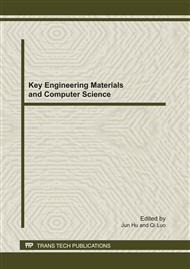p.329
p.335
p.341
p.347
p.353
p.359
p.363
p.369
p.373
Experimental and Numerical Research on Effective Thermal Conductivity of Granular Porous Media
Abstract:
Effective thermal conductivity of granular porous media is investigated by experimental and numerical methods. Using the unsteady heat conduction formula of semi-infinite body, effective thermal conductivity is obtained by measuring temperature field of the experimental system. In this experiment, solid particle is pebble and pore fluid is water or brine with salinity of 20.2%. Granular porous media is not applicable for fractal method, therefore based on structural character of granular porous media; two-dimensional cylinder model is used to calculate effective thermal conductivity of granular porous media in this paper. The simulation results correspond well with the experimental results. This proves that calculating effective thermal conductivity of granular porous media by using this two-dimensional model is accurate. This model could be extrapolated to unsaturated porous media. Research shows that effective thermal conductivity increases logarithmically with the increasing of saturation.
Info:
Periodical:
Pages:
353-358
Citation:
Online since:
August 2011
Authors:
Price:
Сopyright:
© 2011 Trans Tech Publications Ltd. All Rights Reserved
Share:
Citation:


